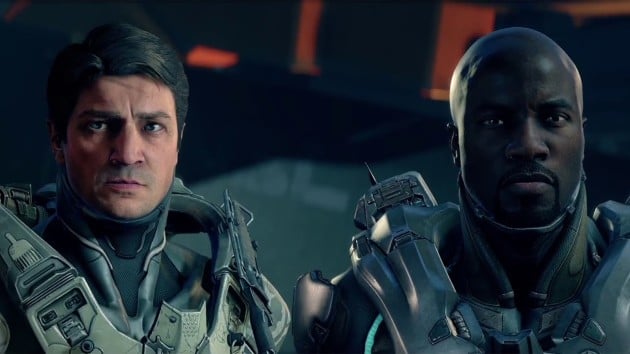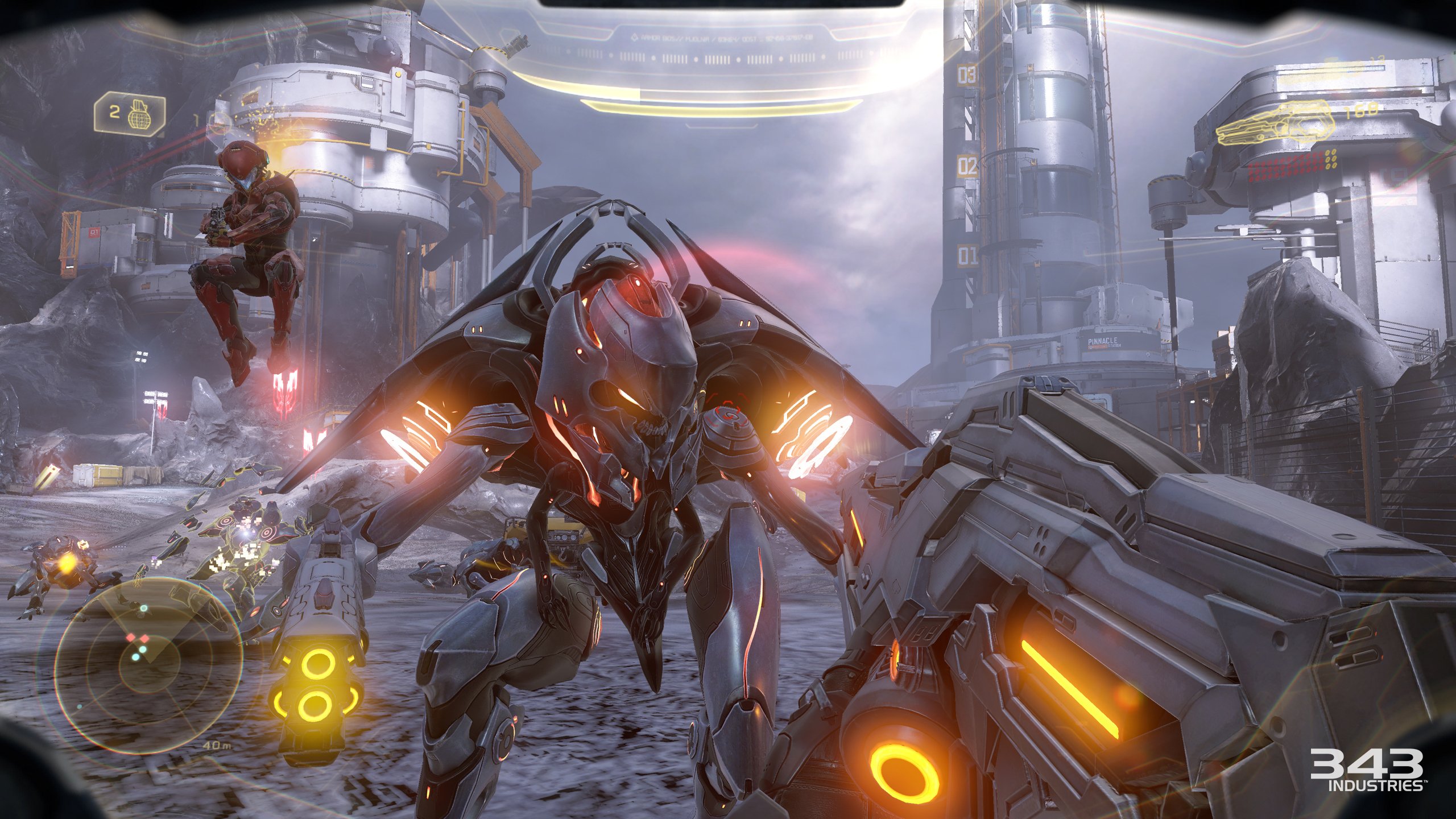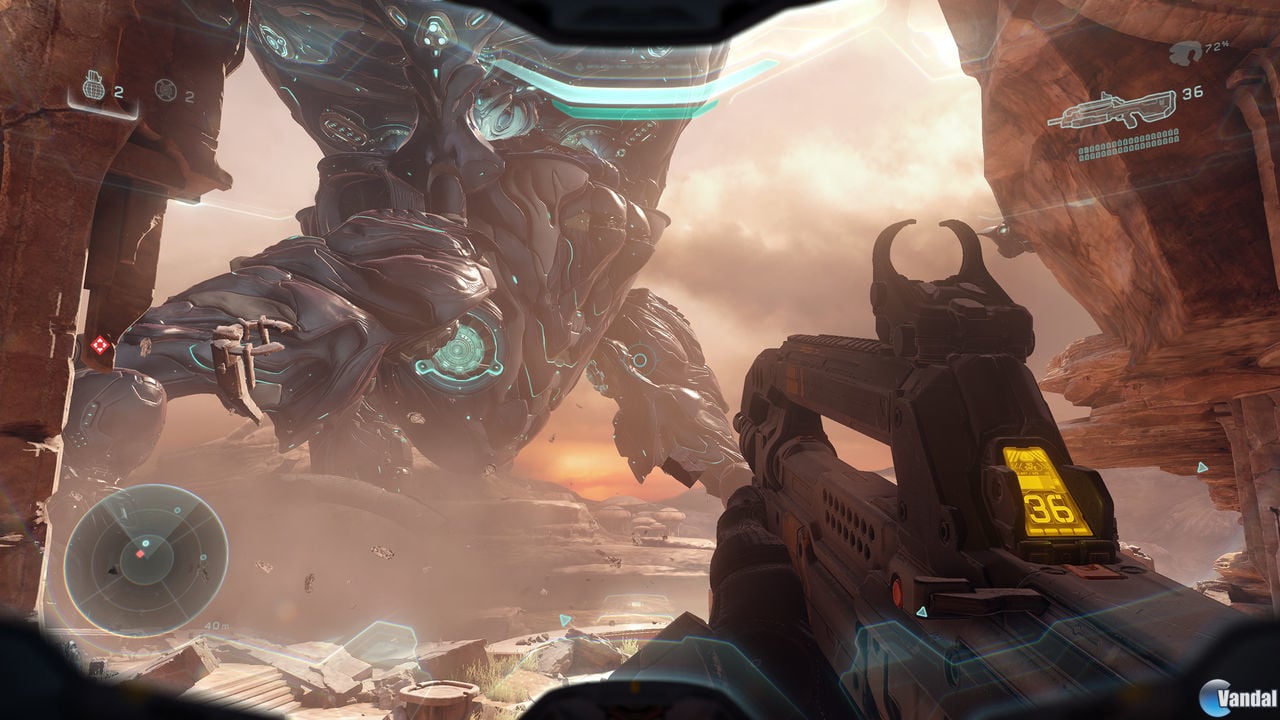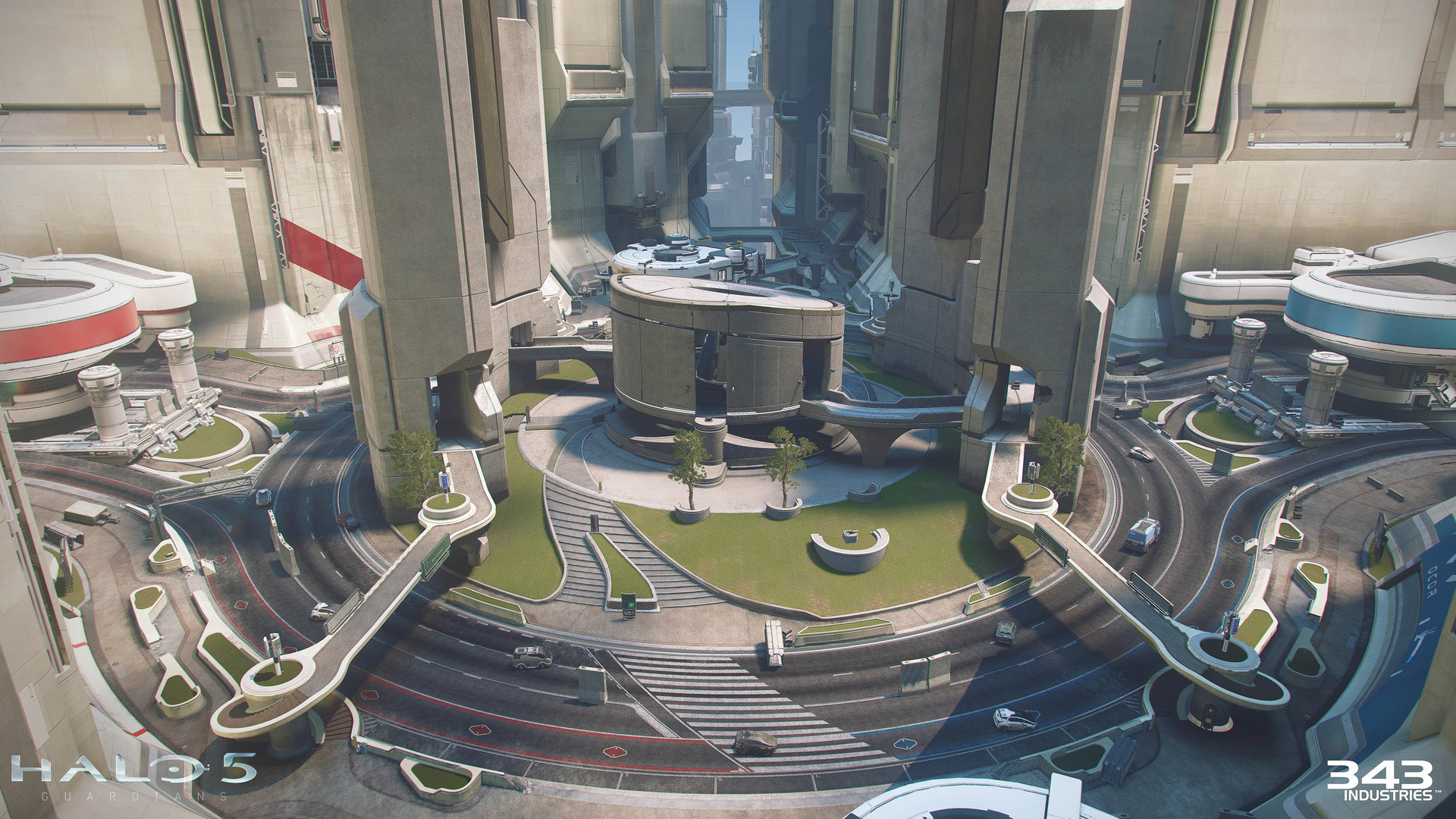I really wanted to dislike Halo 5: Guardians. It all started months before release, when developer 343 Industries announced via Twitter that the much beloved split-screen feature, a series staple, would be left on the cutting room floor. Next was the overtly misleading marketing campaign — players were invited to come “Hunt the Truth” in a tale of revenge and betrayal between the Master Chief and series newcomer Spartan Jameson Locke, a tantalizing concept that hands-on playthroughs began to elucidate had nothing at all to do with the actual game.
Yet despite these valid criticisms, Halo 5 made me a believer. It’s a stunning showcase for the Xbox One, defying my expectations of what’s achievable visually on the platform. It also boasts an amazing single-player campaign and a competent multiplayer suite that moves the series into new territory. Minor issues and lack of content on the multiplayer front hold it back from classic status as of now, but this is still one fantastic shooter that can’t be missed by fans of Halo, sci-fi, or action-adventure.

Story
I imagine Halo 5’s story will be divisive amongst series loyalists; it focuses little on the Master Chief, shrouding much of his tale and motivations beneath the investigative assignment of Spartan Jameson Locke, whom you play as for the majority of the campaign. Tagging along with Locke and Chief through their respective adventures are their compatriot Fireteams. Master Chief’s “Blue Team” consists of three old friends from his childhood in the Spartan-2 program, while Agent Locke’s more eclectic bunch of comrades form team “Osiris”.
Plenty of inter-mission banter is interspersed through the proceedings of each teams, which fleshes out the backstories behind each world and the alien species encountered within them. It doesn’t, however, do as great a job as you’d hope at expounding upon the history of the characters themselves.
It’s an issue that plagues the entire Halo 5 narrative to a degree — many of its most important elements, those that would turn this already solid story into a great one, are tucked away in other mediums of the Halo universe and have rarely or never been referenced in prior games. Seeing how Halo has grown over the years to include novels, comics, audio documentaries, and CGI television shows, it’s a story whose complexities will only really be appreciated by those heavily invested in other avenues of the franchise’s fiction.
It’s a testament, then, to Halo 5’s writing that the story still feels impactful and consequential.
Each twist and turn is satisfying, locations all have a strong connection to the story, and there’s a particularly inviting mystery behind the antagonist that is well-developed over the course of the game. It also avoids the overly-convenient resolution that Halo 4 suffered with its villainous Didact.
Many players may riot at the cliffhanger ending that’s so reminiscent of Halo 2, but the closure here subtly sheds new light to other aspects of the story that may have initially seemed inconsequential. If anything, it has made me that much more eager to jump into the inevitable Halo 6 because of it!
Gameplay and Design
Luckily, Halo 5’s gameplay will quickly erase any nagging complaints one may have with the narrative. Simply put, this is perhaps the best campaign I’ve ever played in a first-person shooter. Admittedly, this genre is lacking in many standout single-player experiences, but the point remains. The combination of sublime combat mechanics, ruthlessly diverse AI and engrossing level design adds up to a fantastic solo experience that becomes even better when co-op is added to the mix.
Much of 343i’s focus this time around has been on creating a campaign that seamlessly accommodates cooperative play, and there is no greater beneficiary of this philosophy than the fantastic level design. Missions are distinctly linear, but combat zones contain a wide multitude of routes and approach options that allow you to plan each encounter to your specific style. They also provide ample opportunities for flanking enemies via hidden caves, sniping from vertically-displaced alcoves and sneaking up on unsuspecting foes via subterranean passageways.
Combat remains tight and focused despite the labyrinth of interconnected routes and vertical layers that make up each play space.
If there’s any complaint to be had here at all, it’s that the friendly AI that controls your teammates when playing solo sometimes does a poor job of reviving you when fallen into a “downed” state. The issue seems to be related to the AI’s pathfinding capabilities in more complex terrain, as simpler areas of the game don’t reproduce the problem. Players are smartly granted the ability to order basic squad commands to the AI as well, to keep them focused on specific enemy targets or to pick up more valuable weapons strewn throughout the battlefield.
Significant time and attention seems to have been paid to navigation outside of combat areas; little to no time is spent aimlessly wandering through overly large levels as was the case in earlier Halo games, and areas void of combat are often the sites of critical story moments or showcases for the incredible vistas and landscapes that make up these fantastical worlds.
There’s a genuine sense of place here; a semblance aided by 343i’s decision to set the adventure primarily in three distinct locations — the gassed colony of Meridian, the Covenant Homeworld of Sanghelli, and the Forerunner Planet of Genesis. Each environment showcases a mastery of artistic expression, with a plethora of assets like murals, monuments, and flora that visually reinforce the mood and aesthetic.
For those of you explorers out there…
343i has hidden plenty of collectable intel and skull modifiers in each mission, the former providing valuable insights into the backstory while the latter serve as unlockable campaign modifiers. In a departure from tradition, a couple of missions eschew combat entirely, allowing you to freely walk around areas full of NPC’s to eavesdrop and converse with before proceeding to the next mission. These sequences are a welcome respite from the shooting and even contain some light-hearted, humorous dialogue for players who explore the areas and don’t rush straight to the objective waypoints. On the recommended Heroic difficulty, the game took me approximately 9 hours to complete — a figure right in line with previous entries of the series.
Presentation
Halo 5 is a technical tour-de-force, containing some of the most impressive visual and audio panache of this console generation. That accomplishment begins with the aforementioned environments — every planet, colony, and spaceship has been made with an impeccable level of craftsmanship, complimented by phenomenal lighting and texture detail. Particle effects emanating from weapons, vehicles, and explosions are entirely convincing, and the game’s individual elements blend together seamlessly, with no discernible ugliness of any particular levels or assets.
On the aural front, Halo 5’s musical score maintains the high bar of quality that the series is renowned for. I suspect that none of the new orchestral pieces will become as iconic as Halo CE’s original theme proved to be, but each tune does a great job of carrying the adventure nonetheless. A particular highlight of the auditory package is the sound design; weapons and explosions produce incredibly crisp and distinct timbres while vocal performances have been expanded to provide dialogue to the Covenant and Promethean forces in addition to friendly Spartans.
Halo 5’s most stunning technical achievement, though, is its complete adherence to a locked 60 FPS presentation.
Seeing Halo running at this fluidity is an absolute sight to behold, and does wonders for every aspect of the game, from the controller response to perceptional elements like animation and dynamic lighting. It’s so fluid, and dare I say PC-like, that it was hard for my eyes to adjust back to other 30 FPS titles afterwards.
To hit this framerate target however, many under-the-hood compromises had to be made with regard to the game’s engine. Halo 5 operates at a dynamically-changing resolution depending on processing load, maxing out at a full 1080p but often dipping significantly below that. In some of the game’s most complex areas with hordes of enemies on screen, resolution can drop in the neighborhood of 1152×810 (according to analysis conducted by Digital Foundry) where pixelation becomes distracting in areas of foliage and natural terrain. In typical scenarios, however, the resolution remains high enough to not significantly detract from the overall presentation.
Another odd compromise that eagle-eyed observers will notice is the reduction in animation fluidity for enemies past a certain distance from the player. While relatively inconsequential during the single-player experience due to the already robotic movements of the Promethean soldiers, the transition is sometimes jarring in multiplayer bouts where distant Spartans begin to take on an almost stop-motion appearance.
The most unfortunate casualty of Halo 5’s 60 FPS mandate, however, is the complete absence of any split-screen multiplayer for either the campaign or multiplayer modes.
Split-screen multiplayer has all but defined the Halo series since its inception, and its removal is just egregious — especially considering how concomitantly the campaign’s design allies with cooperative play. It’s one of the few instances where I can support fans in their outspoken derision towards a developer over a particular oversight. I can only hope that 343i will recognize the importance of re-adding this critical feature into Halo 6.
Multiplayer
Halo 5’s arena multiplayer suite embraces the competitive underpinnings of Halo more than any previous title, with changes like the new movement options from the suit’s Spartan Abilities, a noticeable reduction in controller aim-assist, mechanical compromises between sprinting and shield recovery and the removal of weapon loadouts in favor of homogeneous starter weapons that are swapped based on the game mode.
This high degree of competitiveness extends to the map design as well. Opportunities for trick jumps and clever use of Spartan dashes are plentiful, while sight-lines and verticality across the map feel cleverly orchestrated to facilitate a balance between long-range and close-quarters weaponry. Many of the flashier visual elements of the campaign levels feel pared back here too, likely in order to improve player visibility and ensure performance levels. These traits are highly evident in the maps catering to arena staples- like Team Slayer, Rumble Pit and Capture the Flag.
The changes make Halo 5 a far more lively and acrobatic experience than it ever felt like under Bungie’s tutelage.
Compared to Halo 4 however, there is a certain element of compromise. Halo 5 provides sterility with its balanced weaponry and open map layouts that make it far more competitively viable than its predecessor. But much of the unpredictability and chaos that Halo 4’s Ordinance Drops and loadout customization provided is lost, making this Halo less socially enjoyable overall.
Some notable new game modes have been introduced into Halo 5’s multiplayer. The first of these, Breakout, is a 4v4, single-life team deathmatch where the objective is to either eliminate all members of the enemy team or capture a neutral flag and return it to the enemy base. The mode takes place on its own set of symmetrical Forge maps with a holographic aesthetic, and it is tactically reminiscent of something like Counter-Strike. The amount of fun you’ll have playing it, though, seems highly dependent on whether you’re able to play with friends or are only being paired with random teammates online.
The star of Halo 5’s promotional materials has been Warzone, and it serves as the next-generation replacement for past modes like Firefight and Spartan Ops.
In this all new 12v12 multiplayer extravaganza, players are tasked with obtaining points via capturing bases, killing opponents, and taking down AI-controlled baddies and bosses that spawn in at varying intervals through each match. Each map is huge, seemingly around the size of three Big Team Battle maps mashed together, and the action often shifts across these levels until one team acquires the necessary 1000 points to win the match.
With many ways of scoring and the entire Halo sandbox in play on a single map, Warzone is at its best an unpredictable and wild affair. Too often though, I found objective points scattered so far apart on the map that there’s long moments of downtime where you’re just running around searching for some action. It’s a more patient Halo affair, all-considering, and it’s way more similar to something like Battlefield than the in-your-face action of Halo’s arena multiplayer.
There’s a variant of Warzone called Warzone Assault as well, which removes the AI-controlled enemies and reduces the focus on piloting vehicles. One team is tasked with capturing a linkage of bases in succession, while the enemy team attempts to defend them. It’s a hectic and fun mode, but suffers by not giving each team an opportunity to play both offense and defense during each match. The developers should take a note from Unreal Tournament’s Assault mode, where whichever offensive team completed the objectives faster would win the match.
Warzone is where Halo 5’s controversial microtransactions make their first appearance.
Rather than providing players with power weapons and vehicles across the map, players must use “Requisitions” (REQ’s) obtained from packages through extended play or actual currency to call in weapons and vehicles to the battlefield. The catch is that a Spartan may only call in a REQ at equal or lesser value as what their REQ level currently is during a match. Some of these REQ’s, once selected, become permanent additions to your loadout for the match, while power weapons and vehicles are single-use only. Depending on how you want to look at it, that fact could either cheapen or increase their perceived value.
343i has created an innumerable amount of REQ cards to the system, many of which are more powerful variants on existing weapons and vehicles. For example, players can call in a modified battle rifle with a long-range sniper scope or a Mongoose armed with rocket launchers. Unfortunately, most players who don’t indulge in paying for microtransaction REQs will have a slim chance of ever obtaining these powerful variants for themselves, due to the rarity of these cards in the free packages. Luckily, most of the default power armaments like Rocket Launchers and Scorpions are readily provided in the free REQs.
By the series’ own standard, Halo 5’s multiplayer suite feels distinctly unfinished. Many previous game modes like Regicide, Oddball, Infection and Firefight remain unaccounted for, while fan favorites like Big Team Battle are entirely populated by community-built Forge maps, with little of the craftsmanship 343i bestows on its Warzone and Arena experiences.
There’s also a distinct lack of maps, especially in Warzone with only 4 available battlegrounds at time of writing. Many of these shortcomings will likely be addressed in the months ahead as part of 343i’s free DLC release schedule, but it doesn’t seem appropriate to have to wait months for some of the most popular game modes and additional maps to make their appearance.
Conclusion
Halo 5: Guardians is a fantastic and incredibly polished title that’s only slightly held back by its lack of expected features and limited multiplayer content. Some of this will hopefully be rectified during 343i’s extended free DLC release schedule, while other omissions like split-screen are more glaring and will hopefully be addressed in the series’ next installment. It’s not quite the sensation that Halo 4 proved to be for myself and my circle of friends, but it’s still an excellent game that Xbox One owners owe it to themselves to have in their libraries.











Published: Feb 10, 2016 11:24 am